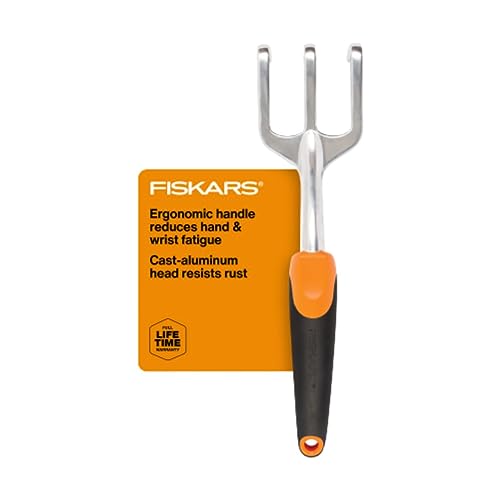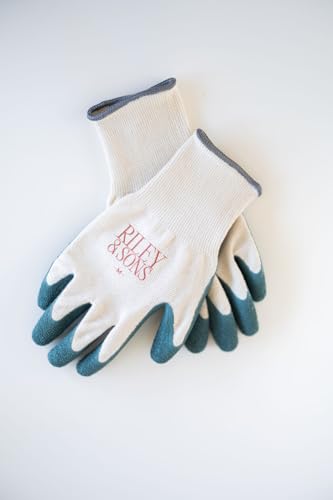Best Handheld Dethatcher
—
A lush, green lawn is the envy of every homeowner, but achieving that perfect turf often requires more than just mowing and watering. Thatch buildup can suffocate your grass, hindering growth and inviting disease.
A handheld dethatcher is a vital tool for tackling this problem, allowing targeted removal in smaller areas or for spot treatment. However, not all dethatchers are created equal.
Choosing the right one can mean the difference between a healthy, vibrant lawn and a frustrating, ineffective experience. Sifting through the myriad of options to find the best handheld dethatcher can be overwhelming.
Our comprehensive review focuses on helping you make an informed decision, prioritizing quality, durability, and value to ensure you invest in a tool that delivers real results for your lawn care needs. —
IN THIS ARTICLE
Top 2 Best Handheld Dethatcher Compared

🏆 BEST OVERALL 40Inch Tine Tow Dethatcher with 20 Rust-Proof and Replaceable Heat-Treated tines
- Efficient thatch removal with 20 heat-treated tines.
- Attaches easily to lawn tractors or riding mowers.
- Weight tray allows for increased dethatching effectiveness.
- Replaceable tines extend the product’s lifespan.
4.3/5
Check Price on Amazon

🥈 2ND RUNNER UP GANAZONO 1pc Triangular Wood Hoe Hand Tools Mutito
- Offers different hoe types for varied gardening tasks.
- Lightweight and portable for easy maneuverability.
- Durable materials used in construction.
- Potentially useful for weeding, soil loosening, and other gardening chores.
4.6/5
Check Price on Amazon
Detailed Reviews of the Best Handheld Dethatcher
40Inch Tine Tow Dethatcher with 20 Rust-Proof and Replaceable Heat-Treated tines – Efficient thatch removal with 20 heat-treated tines.

The 40-Inch Tine Tow Dethatcher aims to simplify lawn care by attaching to a lawn tractor or riding mower, effectively removing thatch and debris. It features 20 heat-treated tines designed for efficient thatch removal. The 40″ weight tray can hold up to 70 lbs, aiding in thoroughness.
Replaceable tines are a plus, suggesting longevity. While assembly is advertised as easy, the overall product dimensions should be considered for storage. The dethatcher appears to be a solid option for homeowners seeking to improve lawn health without manual raking, but optimal performance may depend on the type of grass and thatch accumulation.
Pros
- Efficient thatch removal with 20 heat-treated tines.
- Attaches easily to lawn tractors or riding mowers.
- Weight tray allows for increased dethatching effectiveness.
- Replaceable tines extend the product’s lifespan.
- Potentially saves time and effort compared to manual raking.
Cons
- Assembly, while advertised as easy, may still require some time and effort.
- Storage space is needed for the dethatcher when not in use.
GANAZONO 1pc Triangular Wood Hoe Hand Tools Mutito – Offers different hoe types for varied gardening tasks.

This set of gardening hoes aims to provide convenience for various gardening tasks. The triangle scuffle hoe is designed for weeding and soil loosening, while the pick hoe offers portability for working in different areas of the garden. The manufacturer emphasizes the hardness of the hoe’s tip and the durability of the materials used in construction.
The product is presented as a thoughtful gift option for gardening enthusiasts. However, the description lacks specific details about the handle material, overall dimensions, and the actual types of gardening tasks the tools are best suited for. Potential buyers should consider these missing details before purchasing.
Pros
- Offers different hoe types for varied gardening tasks.
- Lightweight and portable for easy maneuverability.
- Durable materials used in construction.
- Potentially useful for weeding, soil loosening, and other gardening chores.
Cons
- Lacks specific information about handle material and tool dimensions.
- Vague description of ideal gardening tasks.
Buying Guide: What to Look For in a Best Handheld Dethatcher
Understanding Dethatching and Why It’s Important
Dethatching is the process of removing the layer of dead organic matter (thatch) that accumulates between the grass blades and the soil surface. A thin layer of thatch can be beneficial, acting as a mulch. However, excessive thatch buildup can hinder water, air, and nutrient penetration, leading to shallow root growth, increased disease susceptibility, and an overall unhealthy lawn. Choosing the *best handheld dethatcher* depends on your lawn size and thatch level.
Types of Dethatchers
While the provided product information leans toward tow-behind dethatchers, it’s important to consider different types. Manual lawn rakes are the most basic and suitable for small areas with light thatch. Power rakes or vertical mowers are gas-powered or electric machines ideal for larger lawns with significant thatch buildup. Handheld dethatchers, like specialized rakes with curved tines, fall in between and are good for spot treatment or smaller lawns. When selecting the *best handheld dethatcher*, consider the size of your lawn.
Factors to Consider When Choosing a Dethatcher
Several factors influence the choice of the *best handheld dethatcher*. Lawn size is crucial; handheld models are best for smaller areas. Thatch thickness determines the dethatcher’s power needed. For light thatch, a simple rake might suffice, while thicker thatch requires a power rake. Consider the ease of use and maneuverability. A lightweight and well-balanced dethatcher is easier to operate. Durability and construction materials are also important for longevity. Heat-treated tines, as mentioned in the product information, are a good indicator of quality.
Tow-Behind Dethatchers vs. Handheld Options
The provided product information focuses on a tow-behind dethatcher, which attaches to a lawn tractor. These are best for larger lawns. Handheld dethatchers offer more precision and are suitable for smaller areas or spot treatments. The advantage of a tow-behind dethatcher is the ability to cover large areas quickly, while handheld dethatchers offer greater control and are more affordable for small lawns. The *best handheld dethatcher* is often determined by the lawn size.
Maintaining Your Dethatcher
Proper maintenance ensures the longevity of your dethatcher. Clean the tines after each use to remove debris. Inspect the tines regularly for damage and replace them as needed (if replaceable). Store the dethatcher in a dry place to prevent rust. For tow-behind dethatchers, lubricate moving parts according to the manufacturer’s instructions. Regular maintenance will keep your *best handheld dethatcher* functioning optimally for years.
Frequently Asked Questions about Best Handheld Dethatcher
What exactly is thatch, and why is it bad for my lawn?
Thatch is a layer of dead organic matter, including grass clippings, dead leaves, and roots, that accumulates between the green grass blades and the soil surface. While a thin layer can be beneficial, excessive thatch prevents water, air, and nutrients from reaching the soil, stifling root growth. This can lead to a weakened lawn that is more susceptible to disease, pests, and drought. Dethatching helps to remove this build-up, promoting a healthier and more vibrant lawn. Choosing the *best handheld dethatcher* can help maintain your lawn.
How do I know if my lawn needs dethatching?
A simple test is to take a shovel and remove a small wedge of turf about four inches deep. Examine the layer between the green grass and the soil. If this spongy layer of thatch is more than half an inch thick, it’s time to dethatch. Another indicator is a lawn that feels spongy underfoot and is slow to recover after being walked on. A visual inspection revealing a dense, brown layer at the base of the grass blades also suggests excessive thatch buildup. The *best handheld dethatcher* may be required to remove the thatch.
When is the best time of year to dethatch my lawn?
The best time to dethatch is during the active growing season for your grass type. For cool-season grasses (like Kentucky bluegrass and fescue), early fall or early spring are ideal. For warm-season grasses (like Bermuda and zoysia), late spring or early summer is best. Dethatching during these times allows the grass to recover quickly and fill in any bare spots created by the dethatching process. Avoid dethatching during periods of extreme heat or drought, as this can stress the lawn.
Can I use a regular rake instead of a dethatching rake?
While a regular leaf rake can remove some surface debris, it’s not designed to effectively remove thatch. Dethatching rakes have curved, sharp tines specifically designed to dig into the thatch layer and pull it out. Using a regular rake will likely require significantly more effort and may not remove the thatch effectively. Investing in a *best handheld dethatcher* will make the task easier and more efficient.
How do I use a handheld dethatcher properly?
Use a handheld dethatcher with firm, even strokes, pulling the tines through the thatch layer. Work in overlapping rows to ensure complete coverage. Avoid digging too deeply, as this can damage the grass roots. After dethatching, rake up the loosened thatch and remove it from the lawn. You may want to overseed and fertilize the lawn after dethatching to promote new growth. The *best handheld dethatcher* will be easy to maneuver and control.
What should I do with the thatch I remove from my lawn?
Removed thatch can be composted, used as mulch in garden beds (if free of weeds and diseases), or disposed of. Composting is an environmentally friendly option that turns the thatch into a valuable soil amendment. If using as mulch, ensure the thatch is free of weed seeds and diseases to prevent their spread. Check your local regulations for proper disposal methods if you choose to discard the thatch.
Will dethatching damage my lawn?
If done correctly and at the right time of year, dethatching should not significantly damage your lawn. However, it can temporarily thin out the grass. That’s why it’s important to dethatch during the active growing season when the grass can quickly recover. Avoid dethatching too aggressively, as this can damage the grass roots. Overseeding after dethatching can help fill in any bare spots and promote a thicker, healthier lawn.
How often should I dethatch my lawn?
The frequency of dethatching depends on the type of grass, soil conditions, and maintenance practices. Some lawns may only need dethatching every few years, while others may require it annually. Regularly monitor your lawn for thatch buildup and dethatch when the layer exceeds half an inch. Proper mowing practices, such as mowing at the correct height and leaving grass clippings on the lawn (grasscycling), can help reduce thatch accumulation.
Are there any alternatives to dethatching?
Aerating your lawn can help improve soil drainage and reduce thatch buildup. Aeration involves removing small plugs of soil from the lawn, which allows air, water, and nutrients to penetrate the soil more easily. Topdressing with compost can also help break down thatch and improve soil health. These practices can be used in conjunction with dethatching or as alternatives for lawns with light thatch.
Where can I buy the best handheld dethatcher?
The *best handheld dethatcher* can be found at most home improvement stores, garden centers, and online retailers. Look for models with durable construction, heat-treated tines, and comfortable handles. Read customer reviews and compare prices before making a purchase. Consider the size of your lawn and the thickness of the thatch when choosing a dethatcher. A little research will help you find the perfect tool for your lawn care needs.
Conclusion: The Final Verdict
The 40Inch Tine Tow Dethatcher with 20 Rust-Proof and Replaceable Heat-Treated tines the 40-inch tine tow dethatcher is a worthwhile investment for homeowners looking to improve their lawn’s health and appearance. it simplifies the dethatching process, potentially leading to a healthier, greener lawn with regular use. recommended for those with medium to large lawns and compatible riding mowers/tractors.




